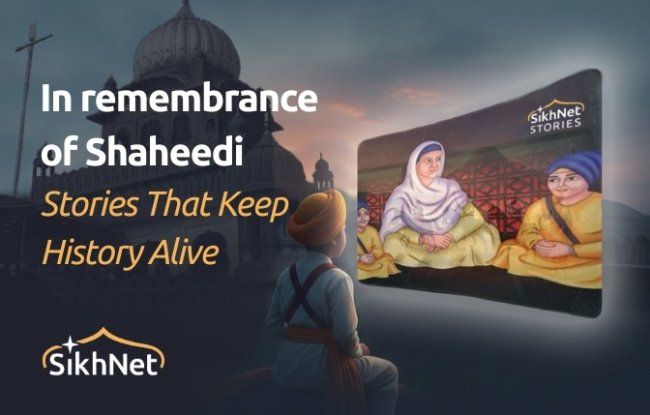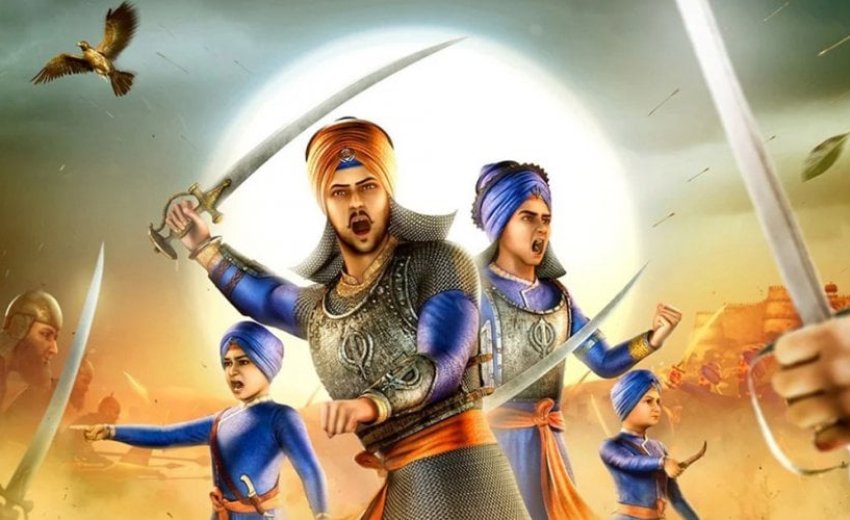A six-year-old was given the assignment to write about how his family celebrates their holidays in December. He chose the topic Shahadat of Sahibzade, which depicted the martyrdom of the four sons of Guru Gobind Singh Ji. When asked why he chose this topic, the child smiled and said,
“Baba Fateh Singh was the same age as me and he was so brave.”
Each December, the Sikh community commemorates the sacrifice made by Guru Gobind Singh Ji’s four children in 1704. Lakhs of devotees attend the Shaheedi Jor Mela or Shaheedi Sabha organized in their memory of the martyrdom at the Fatehgarh Sahib gurudwara in Punjab.
The historic event
In the last decade of the 17th century, the hill kings fought multiple wars with the Sikhs but were unable to drive them from Anandpur Sahib. Guru Gobind Singh Ji established the Khalsa in 1699, which was seen as a threat by the neighbouring hill kings and the Mughal empire.
In 1704, King Bheem Chand of Bilaspur and King Hari Chand of Handuria conducted a fatal attack on Sikhs. They surrounded Anandpur Sahib with the assistance of the Mughal empire. The troops of Sirhind, Lahore, Jalandhar, Malerkotla, and Saharnpur also participated in the attack. Anandpur Sahib was deprived of supplies for several months. It is said that the Hindu monarchs and Muslim Mughal governors negotiated a truce with the Sikhs and pledged there would be no violence provided Guru Gobind Singh Ji left Anandpur Sahib.
Martyrdom of the elder Sahibzadas
As per historical records, Guru Gobind Singh Ji left Anandpur Sahib on 20th December 1704. However, his adversaries violated their promise. Guru Ji and his disciples were attacked near the river Sarsa, about 25 kilometres from Anandpur Sahib.
Since the river Sarsa was flooded, many Sikh soldiers swept away. Guru Gobind Singh Ji's family was split up and dispersed in three different ways during the commotion. His wife, Sahib Kaur and Bhai Mani Singh, a companion, headed in the direction of Malwa. Guru Ji, his two elder sons, and 40 other Sikhs travelled in the direction of Chamkaur Sahib. Simultaneously, his mother Mata Gujri Kaur Ji and Guru Ji’s two younger sons undertook a journey towards Sirhind.
The Mughal emperor Aurangzeb placed a value on Guru Gobind Singh Ji's head, expecting to sweep out the Sikhs forever by assassinating their leader. The Sikhs were suddenly attacked by the Mughals when they were resting at Chamkaur. The elder children, Sahibzada Ajit Singh and Sahibzada Jujhar Singh were also present there. As the Sikhs were severely outnumbered, they took permission from Guru Ji as they knew it was the only possible way. The two sahibzadas sacrificed their lives in the battle of Chamkaur on 22nd December, fighting against the Mughal army that had tried so hard to end the legacy of the Sikhs.
Martyrdom of the younger Sahibzadas
Guru Ji’s younger sons, Sahibzada Zorwar Singh and Sahibzada Fateh Singh, and their grandmother were staying at the home of Gangu, their family cook, in the village of Kheri. Gangu, whom Guru Ji trusted, proved himself unworthy of the faith reposed in him by handing them to Sirhind's Nawab Wazir Khan for reward money.
Mata Gujri Ji and the two sahibzade, were imprisoned in the Thanda Burj (cold tower), which had a river running next to it. It was terribly cold. Mata Gujri Ji reminded them of the courageous legacies from which they were born. Their grandfather, Guru Tegh Bahadur Ji, the ninth Sikh Guru, had devoted his life to saving an entire community of Hindus. She inspired them by reciting gurbaani (Sikh hymns) and praising the Creator. The two young sahibzadas were resolute in their discipline and uncompromising in their dedication to their faith.
In the court, the children were told that their father and sons had been killed in the war. They were promised riches and wealth if they converted to Islam. However, they refused to bow down to the Nawab or convert. Since Wazir Khan failed to persuade them to renounce their faith, he ordered to brick them alive. Other Muslim courtiers, including Nawab Sher Khan, objected to this, saying that this cruelty was against Islam. All the pleas went unheard and the death sentence was executed.
As per records, even when the wall was being built around the sahibzadas, they did not flinch. So, the two executioners then sliced their throats, starting with Sahibzada Fateh Singh, the younger of the two. On the same day, Mata Gujri Ji passed away from shock.
A few years later, Baba Banda Singh Bahadur attacked and captured Sirhind to avenge the execution of the Sahibzade.
The self-less tale of Char Sahibzade transcends time, age, and gender to become our children's ultimate role models. They represent the core values of trustworthiness, bravery, and self-control that we strive to embody in our daily lives.
During the conversation, the six-year-old was asked why we still remember the Sahibzade after all these years, and he innocently replied, “Because if the Sahibzade gave up Sikhi, then we would not be alive.” Then again, he added, “Guru Gobind Singh is so awesome. I want to be like him!”
Children are keen observers of their parents' activities, language, attitudes, conduct, and way of life. It is our duty, to take initiative and spread the word as we pass our legacy and tradition to the generations ahead.
The story of the Chaar Sahibzaade and Mata Gujri are significant stories of martyrdom that inspire the children to connect with their faith and instil in them the same level of sacrifice, courage, and love.

